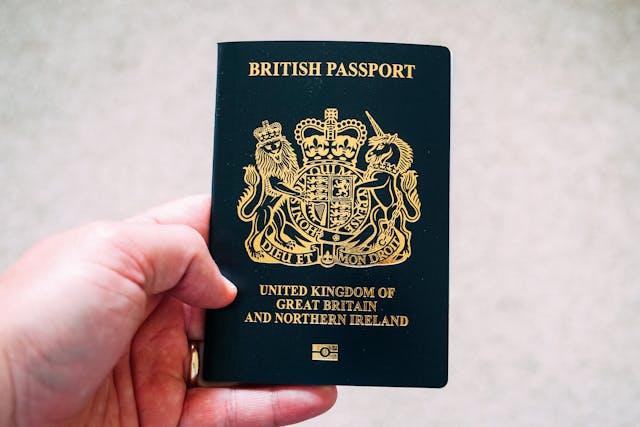
When did people start using passports? The idea for the modern passport was introduced by the League of Nations in 1920, shortly after the end of World War 1. It was basically a way to control immigration.
The idea behind the passport has existed since the very first nation states. A passport was a document that gave someone the freedom to travel without harm through a neighboring nation. They were usually stamped by the king or the leader of the traveler’s home state. The very first example of a passport can be found in the bible. It comes from the book of Nehemiah. He lived in Persian Judea and the book was probably written by Nehemiah, who was the cup bearer to King Artaxerxes I of Persia. A cup bearer is a very trusted official whose job is to pour the wine for the king at his table. In 445 BC, Nehemiah heard that the walls of Jerusalem had been pulled down and the Jews that lived there were in trouble. He asked his king for permission to go and help them and Artaxerxes gave him a letter that asked the “governors beyond the river” to grant him safe passage. It is unlikely that Artaxerxes came up with the idea for this document and they most likely existed for a long time before, but this is the first written example of a passport.
Letters of permission to travel were probably common, but they were not really a passport. In China, during the Qin dynasty, in roughly the 3rd century BC, people used a form of wooden passport that had their age, height, and some other details written on it. Early China had a network of checkpoints that people needed to pass. 3rd century India also appeared to have a form of passport document.
Passports were a document that gave someone permission to travel without harm, but they were not a document that proved where someone was from. This might seem alien to us, but most people had no concept of citizenship and there was very little international travel. The majority of people worked the land and were born and died in the same area, unless they ended up in an army. Ancient Greece was the first country to introduce the idea of citizenship and Romans were probably the first people who needed to prove their citizenship. Being a Roman citizen conferred privileges and different laws on someone. A Roman citizen was registered at birth in the city they were born in and these lists could be checked. Sometimes, citizens were given coins or a bronze tablet as proof. This bronze tablet was called a diploma and a person could take it with them to prove their citizenship wherever they went. This is where our word diplomat comes from.
The tradition of letters of passage continued on throughout Medieval Europe, although the practice was often that the letter was given to a person entering the country, more like a visa than a passport. The word passport comes from the Italian version of this. “to pass the harbor” is “passa porta” in Italian. In the 15th century in England, King Henry V is said to have invented the modern passport. It was backed by an act of parliament and the passports were issued by the government.
The modern passport came into being after World War 1. Before the war, people didn’t really need to documents to travel. During the war, people used identity cards because there needed to be a lot more security. After the war, things reverted to the original system and travel became pretty much free again. This was good for the people that wanted to travel, not so good for the United States. After World War 1, there was a flood of immigrants from war torn Europe and other countries that poured into the United States. Many of them came in through Ellis Island, where the Statue of Liberty is in New York. Americans feared that their way of life was at risk from so many people of foreign birth coming in.
In 1920, the League of Nations held a conference on passports. The US didn’t necessarily force anybody’s hand, but they had a lot of sway. The League finished the conference with a set of standards that all countries in the League could follow when they created passports. The US hit the ground running and started printing passports. They also passed the Immigration Act in 1921, which limited the number of people who could immigrate into the country. Other countries followed suit and passports became necessary to travel. And this is what I learned today.
Photo by Ethan Wilkinson: https://www.pexels.com/photo/crop-unrecognizable-person-demonstrating-british-passport-5428705/
Sources
https://www.migrationpolicy.org/programs/data-hub/charts/immigrant-population-over-time
https://en.wikipedia.org/wiki/Roman_military_diploma
https://www.nationalgeographic.com/history/article/a-history-of-the-passport
https://www.theguardian.com/travel/2006/nov/17/travelnews
https://www.passporthealthusa.com/passports-and-visas/blog/2018-4-the-worlds-first-official-passport
https://en.wikipedia.org/wiki/Nehemiah
https://en.wikipedia.org/wiki/Safe_Conducts_Act_1414
https://en.wikipedia.org/wiki/Passport
